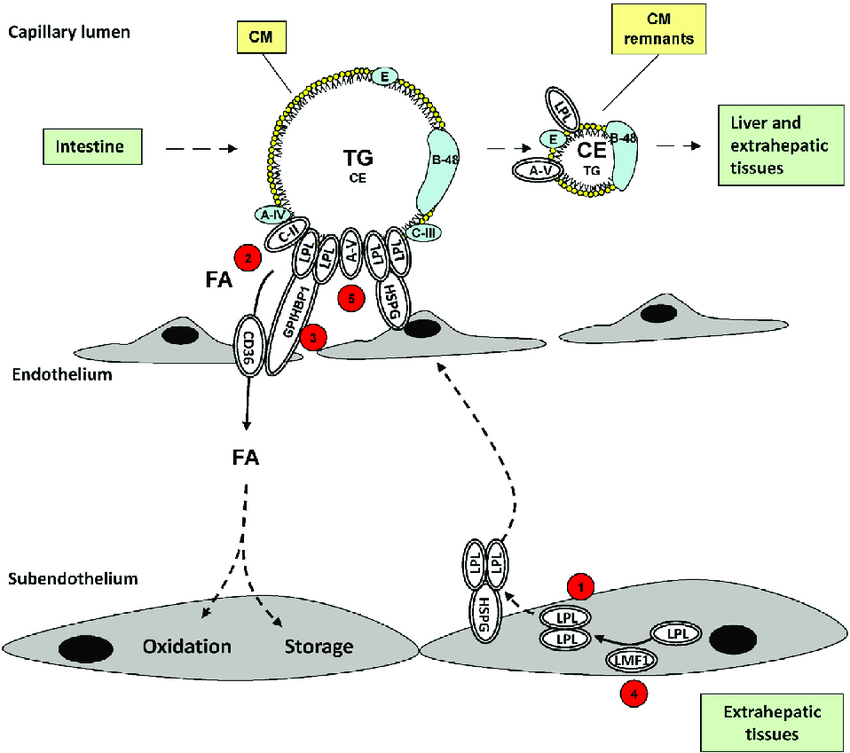When you get yourself checked for cholesterol, you’re bound to see a parameter called triglycerides. What are triglycerides and why do their matter to health? It so happens, triglycerides are an important marker of heart health where a high amount can put you at risk of heart disease. Adopting a healthy heart friendly diet will lower your triglycerides.
What are Triglycerides?
Triglycerides are the most common type of fat or lipoproteins found in the body and blood. They are composed of three fatty acids attached to a glycerol molecule and are digested by pancreatic lipase. A component of VLDL or very low-density lipids (cholesterol), triglycerides serve as a source of energy for the body and are stored in fat cells. When you consume more calories than your body needs, the excess calories are converted into triglycerides and stored in fat cells for later use.

Triglycerides are obtained mostly from dietary fats and carbohydrates, but they are also produced by the liver. While triglycerides are essential for energy storage and metabolism, elevated levels can be associated with various health risks. High triglyceride levels may be linked to conditions such as obesity, metabolic syndrome, diabetes, and cardiovascular diseases. A high calorie, high carb diet can result in high triglycerides and hypertriglyceridemia.
What’s The Difference Between Triglycerides and Cholesterol?
Both are different types of lipids that circulate in your blood:
- Triglycerides store excess calories for energy.
- Cholesterol helps build cells and various hormones.
Here’s What Triglycerides Do:
- Energy Storage: When you consume excess calories without using all that energy, the calories are converted into triglycerides and stored in fat cells (adipocytes) for later use.
- Energy Source: When the body needs energy between meals or during physical activity, hormones release triglycerides from fat cells, and they are broken down into fatty acids and glycerol. These components are then used by cells throughout the body as an energy source.
- Transport of Fats: Triglycerides are packaged with cholesterol and other lipids into lipoproteins, such as VLDL (Very-Low-Density Lipoprotein) and chylomicrons. These lipoproteins transport fats from the liver (VLDL) or intestines (chylomicrons) to various tissues, where the fats can be used for energy or stored for later use.
Although necessary for body function, a high triglyceride level in your blood puts you at risk of health problems such as:
- Hypertriglyceridemia: High blood levels of triglycerides often found in people with obesity, type 2 diabetes, and metabolic syndrome.
- Heart Disease: Elevated triglyceride levels, low HDL cholesterol (good cholesterol) and high LDL cholesterol (bad cholesterol), clogs arteries and increases the risk of atherosclerosis
- Pancreatitis: Extremely high triglyceride levels can lead to a condition called pancreatitis, which is inflammation of the pancreas.
Normal Triglyceride Levels
Normal triglyceride levels are typically measured in milligrams per deciliter (mg/dL) and can vary slightly among different laboratories. The general guidelines for triglyceride levels are:
- Normal: Less than 150 mg/dL
- Borderline high: 150-199 mg/dL
- High: 200-499 mg/dL
- Very high: 500 mg/dL or above
It’s important to note that these values may vary based on individual health conditions and risk factors. Elevated triglyceride levels often go hand in hand with other risk factors, such as high cholesterol and high blood pressure, contributing to an increased risk of cardiovascular diseases.
Maintaining healthy triglyceride levels through a balanced diet, regular exercise, and, medication prescribed by a doctor can help reduce the risk of associated health problems and promote overall heart health.

